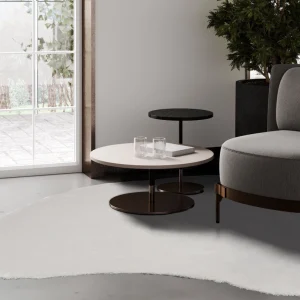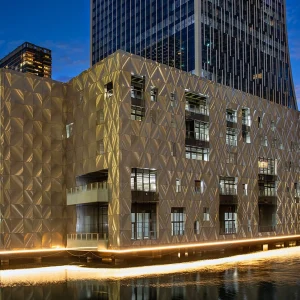Herbert Wright: Is the theme for OAT 2016 something specific about the future?
Hege Maria Eriksson: We have not suggested a theme – we ask the curator to do that. OAT aims to trigger some ideas and standpoints that dare to look ahead, not to create new utopias, but to confront and reflect upon some serious and interesting issues: Climate change and population growth is critically challenging the solutions of today; Economy, politics, religion (including poverty, health/epidemics, conflicts etc.) continuously causes (more or less) unforeseeable disturbance; Technology will not only change our daily lives, but potentially the fields, spaces and creative scope of architecture. Governmental legislation is lagging behind and so is the built environment. How can architecture prepare for the future and react to the challenges as the future is about to happen? We are open to proposals that reject the ‘future’ challenge we pose, but in those cases we are interested in the arguments why not to try a new approach on how to deal with it. This Call welcome proposals that explore, challenge, complicate, subvert, redirect and extend issues of the future – especially those that connect to the contemporary and past in intelligent ways.

OAT 2013’s main exhibition. Photo: Linn Carin Dirdal
HW: Do you sense that utopian visions for the future have been failures and often resulted dystopias, so we should start again?
HME: Suggesting an issue/topic to provoke interesting curatorial concepts was discussed and decided in a workshop. Very different potential approaches to ‘the future’ came up, most of them realistic/pragmatic/anti-utopian, more on innovation than on vision, more on redirection than on restart. Anyway, the imaginary may be useful: One of the participants pointed out how dystopian visions are so much more relevant and creative than utopian.

Oslo © Kartverket
HW: You have asked for an international/European context to the discussion, but isn’t that two totally different things i.e. clean cosmopolitan cities with bike schemes vs developing-world exploding metropoli without infrastructure?
HME: Yes, European and international are different, but also totally interdepending and interacting as people migrate and powers shift. Europe is mentioned because Oslo and Norway belongs to the European history and probably to the European future, but Europe is not interesting without a global context. The point is to look beyond the limited and privileged situation that Norway currently is in.
HW: OAT 2013 with its Sustainability theme Behind the Green Door, curated by Rotor, was a great success- what do you think were the main lessons learnt from it?
HME: Behind the Green Door was based on a one year research period and followed up by the publication. OAT has made it a strategy to use the three year triennial cycle to allow a theme and concept to develop and content to be produced. We hope we can deliver an equally strong contribution by the OAT 2016.

The Norwegian Centre for Design and Architecture, DogA, hosts the main OAT exhibition. Photo: Roberto Di Trani
HW: How much is it possible to engage with local people with an event like this, and will that be an important factor in selecting the curator?
HME: The local public is difficult to reach, but OAT 2013 managed far better than previous Oslo triennials. The Sustainability questions posed by Rotor engaged far more than professionals in the debate, and the extended programme drew the various networks of the many programme partners to the triennale. We aim for different target groups because we believe architecture is not only for architects. For the 2016 events, we hope to create a public space project that will have a strong artistic/architectural character and content and a broad appeal. We ask for such a project as a part of the Curatorial proposal.
HW: Are there tangible benefits to the City of Oslo from hosting a Triennale, or is it just a PR exercise?
HME: So far the PR factor of OAT for the City of Oslo has been marginal. However, the international coverage of OAT 2013 was record high for a Norwegian cultural event. As OAT now attracts more audiences and more press, the PR effect may be emphasized, but this has never been and will not be a driving force for OAT. The support from municipality, ministries and sponsors has been based on a need to discuss issues of architecture and urbanism in alternative modes, to see Oslo in an international context and bring impulses to the local professionals (and back). The 2000 Triennale showed solutions to Oslo’s city growth, which has had impact on planning processes since. We hope that OAT 2013 has given insights and reflection to the way we practice sustainability policy, but don’t expect this to materialize in a few months.
HW: Lisbon’s Trienalle also attracts significant international attention, Venice’s Biennale is iconic, Shenzhen/HK is building, and now Chicago is entering the game. Is it not getting a bit crowded with the Architecture Biennale/Triennale scene?
HME: You are only mentioning a few of the biennales and triennales around, and I am not sure all of us can be interesting or successful. But there is a geographical spread, and even more important: different profiles and programmes. We collaborate and exchange experience more than competing, and I hope at least some of us add valuable and varied material and provide important meeting places to the field of architecture.
(Details of the Curator Call are here. Submissions deadline is 17th October 2014)





